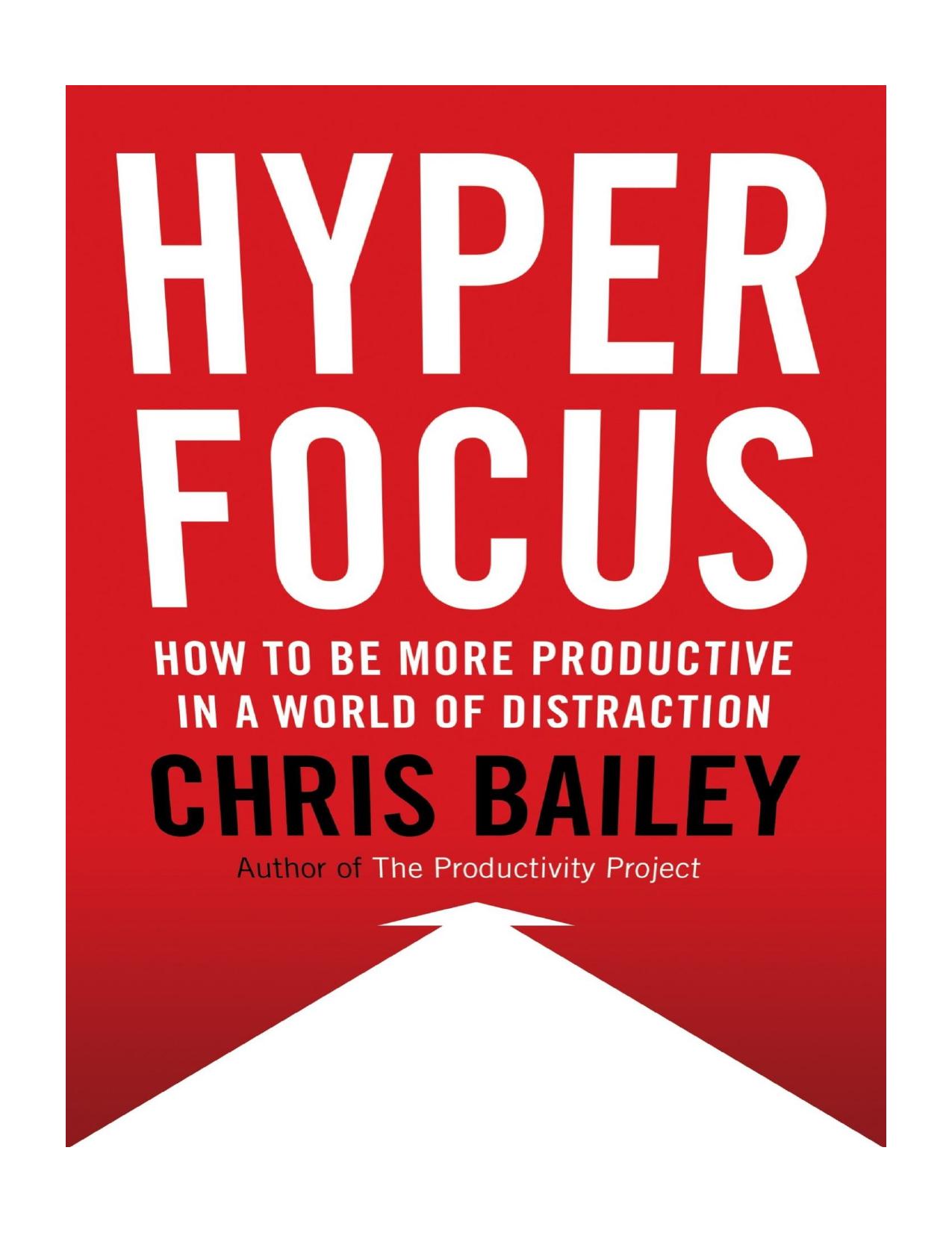Hyperfocus by Chris Bailey

Author:Chris Bailey
Language: eng
Format: epub, azw3, pdf
Publisher: Penguin Publishing Group
Published: 2018-08-27T16:00:00+00:00
PART II
SCATTERFOCUS
CHAPTER
6
YOUR BRAIN’S HIDDEN CREATIVE MODE
Not all those who wander are lost.
—J. R. R. Tolkien
INTRODUCING SCATTERFOCUS
The second part of this book is devoted to the power of mind wandering and directing your attention inward.
Yes, you heard that right—after encouraging you in the first part of the book to rid yourself of that style of thinking, I’m about to explain the strengths of mind wandering. Part of its bad reputation is warranted: when our intention is to focus, daydreaming can destroy our productivity. But daydreaming is immensely potent when our intention is to solve problems, think more creatively, brainstorm new ideas, or recharge. As far as boosting our creativity is concerned, mind wandering is in a league of its own.
Think back to your last creative insight—chances are you weren’t hyperfocusing on one thing. In fact, you probably weren’t focused on much at all. You may have been taking an extra-long shower, having a walk during a lunch break, visiting a museum, reading a book, or relaxing on the beach with a drink or two. Maybe you were sipping your morning coffee. Then, like a flash of lightning, a brilliant idea struck out of nowhere. Your brain mysteriously chose this moment, when you were resting and recharging, to connect a few of the constellations of dots—let’s consider a “dot” to be any idea or piece of information you remember—swirling in your head.
Just as hyperfocus is your brain’s most productive mode, scatterfocus is its most creative.
Entering scatterfocus mode is easy: you simply let your mind be. Just as you hyperfocus by intentionally directing your attention toward one thing, you scatterfocus by deliberately letting your mind wander. You enter this mode whenever you leave attentional space free around what you’re doing in the moment—whether going for a run, biking, or investing time in anything that doesn’t consume your full attentional space.
When it comes to productivity and creativity, scatterfocus enables you to do three powerful things at once.
First, as I’ll discuss in this chapter, it allows you to set intentions and plan for the future. It’s impossible to set future intentions when you’re immersed in the present. By stepping back and directing your attention inward, you’re able to switch off autopilot and consider what to do next. Your brain automatically plans for the future when you rest—you just need to give it the space and time to do so.
Second, scatterfocus lets you recharge. Focusing on tasks all day consumes a good deal of mental energy, even when you’re managing and defending your attentional space using the tactics set out in part 1. Scatterfocus replenishes that supply so you can focus for longer.
Third, scatterfocus fosters creativity. The mode helps you connect old ideas and create new ones; floats incubating thoughts to the surface of your attentional space; and lets you piece together solutions to problems. Scattering your attention and focusing on nothing in particular supercharges the dot-connecting powers of your brain. The more creativity your job or a project requires, the more you should deliberately deploy scatterfocus.
Download
This site does not store any files on its server. We only index and link to content provided by other sites. Please contact the content providers to delete copyright contents if any and email us, we'll remove relevant links or contents immediately.
Big Magic: Creative Living Beyond Fear by Elizabeth Gilbert(4723)
On Writing A Memoir of the Craft by Stephen King(4213)
Paper Towns by Green John(4169)
The Doodle Revolution by Sunni Brown(4043)
Hyperfocus by Chris Bailey(3269)
Evolve Your Brain by Joe Dispenza(3051)
Unlabel: Selling You Without Selling Out by Marc Ecko(2981)
The Red Files by Lee Winter(2914)
The Power of Mindful Learning by Ellen J. Langer(2710)
Draw Your Day by Samantha Dion Baker(2707)
The Art of Dramatic Writing: Its Basis in the Creative Interpretation of Human Motives by Egri Lajos(2412)
The War Of Art by Steven Pressfield(2400)
How to be More Interesting by Edward De Bono(2356)
Applied Empathy by Michael Ventura(2329)
The 46 Rules of Genius: An Innovator's Guide to Creativity (Voices That Matter) by Marty Neumeier(2310)
Why I Am Not a Feminist by Jessa Crispin(2239)
How to Stop Worrying and Start Living by Dale Carnegie(2218)
You Are Not So Smart by David McRaney(2177)
Keep Going by Austin Kleon(2160)
